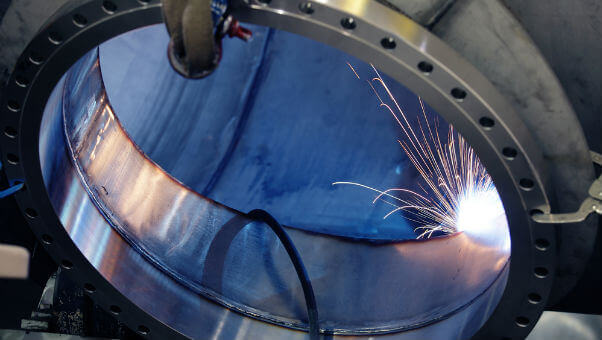
Pressure Vessel Welding Process: ASME Pressure Vessel Code Compliance
Pressure vessels are used to store and transfer liquids and gases under high pressure. Welding on pressure vessels must be extremely high quality to withstand working conditions. Properly preparing the surface for pressure vessel welding can reduce or even eliminate reworking, allowing more uptime for onsite nitrogen systems and other pressure vessels of a similar type.
Great surface prep is key to easily passing tough pressure vessel welding inspections the first time and saving valuable money in the process. Let’s look at some of the basics.
Rules for Construction of Pressure Vessels
Rules for construction of pressure vessels have been established by The American Society of Mechanical Engineers (ASME). The ASME pressure vessel code includes materials, assembly and safety details to ensure the pressure vessel fabrication process meets the needs of industry and will function properly and without concerns of damage or injury to people working around them.
In order to manufacture pressure vessels, there are most often several feet of welds required. A lot of preparation goes into making sure that the pressure vessel welding requirements are met. The best welding preparation work and exceptional welding technique are important to constructing safe and profitable pressure vessels, as well as delighting your customers.
Pressure Vessel Manufacturing Process
Following this basic checklist is a good start toward positive experiences with the pressure vessel welding procedure and appropriate quality of the finished product.
- Select the right raw materials, whether they are plates, wires, welding rods, forgings, or pipes, for the job at hand.
- Cut the raw materials per your job’s specific needs.
- Machine work any parts that require it.
- Assemble the parts of your pressure vessel project.
- Prepare the surfaces to be welded meticulously.
- Be especially careful to guard against after-rust and cross-contamination, particularly if using a grinder or steel brush to clean your parts.
- Weld the parts of the pressure vessel assembly together and inspect all welds.

ASME Pressure Vessel Welding Inspection
Pressure vessel applications are highly pressurized and can be incredibly dangerous. Because of this, pressure vessels must pass rigorous quality control checks per the ASME Pressure Vessel Welding Inspection rules. Welding tests on pressure vessels can include X-ray inspections and appropriate certifications.
When a weld fails ASME testing, costs for refabrication climb substantially. The weld has to be removed, and the area reworked and patched. This can cause your projects to miss their deadlines and go over cost. Proper welding techniques are crucial to profits and repeat customers.
ASME standards govern pressure vessel welds and there are two types of inspections that are common: X-ray and ultrasonic inspection.
X-ray Inspection
X-ray inspection can detect subsurface cracking and inclusions, but it is extremely expensive. For critical weld joints such as in nuclear plants and submarines, only X-ray testing is typically done.
Ultrasonic Inspection
Ultrasonic testing can detect surface and subsurface defects and is done by directing a high-frequency soundwave through the metal and the weld.
Both X-ray and ultrasonic testing methods have advantages and disadvantages. Which is right for your particular project and needs depends on building specs and customer requests.
NiGen can manufacture to your specifications and pass the necessary testing requirements for your job. If you need top-quality pressure vessel fabrication or assistance with compliance testing methods, contact NiGen today.
